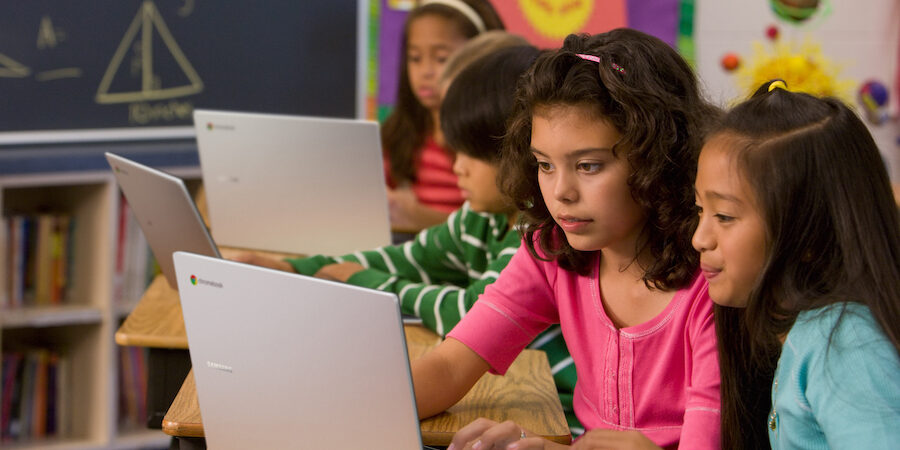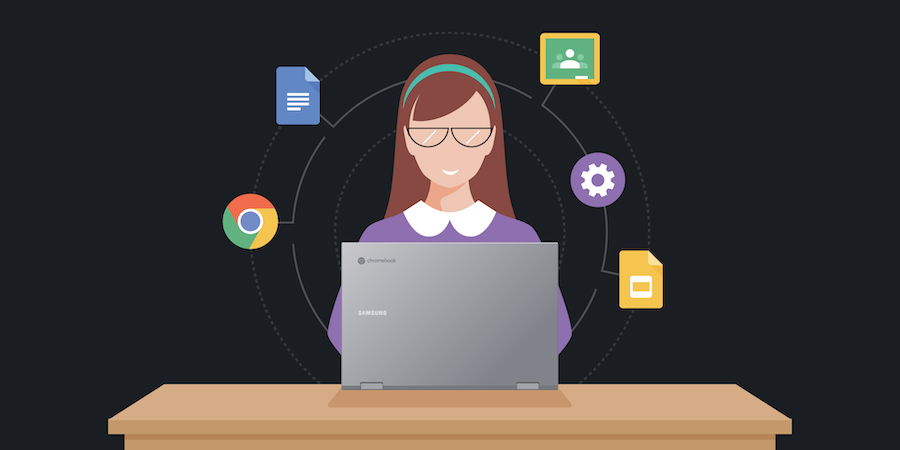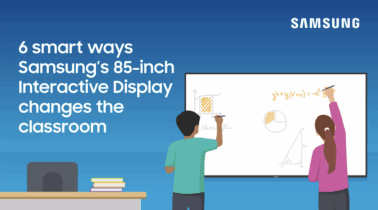Digital learning solutions are a focal point of K-12 education, both in and out of the classroom. Laptops such as the Chromebook Go are a popular choice for education, but tablets offer a versatile alternative. They’re engaging for the youngest learners but can be paired with a keyboard and mouse for older students. Here are five advantages of choosing tablets for digital learning:
1. Tablets are extra-portable mobile learning solutions with just as much storage
Tablets are smaller and lighter than laptops, making them easy to manage and carry around, especially for younger children. Carrying a tablet feels more like carrying a book or a large smartphone than a computer, yet many tablets offer just as much storage as Chromebooks. Samsung Galaxy Tab A9+, for example, comes with up to 128GB of internal storage, plus the option of adding a 1TB microSD card.
2. They’re not dependent on Wi-Fi
K-12 districts nationwide are grappling with the issue of providing connectivity to students without reliable home Wi-Fi access. One solution is to use tablets with LTE connectivity so students don’t have to depend on Wi-Fi. Galaxy Tab A9+ supports faster Wi-Fi 5 and 5G/LTE for ultra-fast connectivity wherever you are.
3. Their touchscreens and digital pens appeal to tactile learners
A tablet is built around its touchscreen. It’s designed to be interactive in a tactile way, making it a perfect choice for younger students who learn best with all their senses engaged. Some tablets, such as Samsung Galaxy Tab S9 FE Series, also come with a stylus or digital pen. The pen allows students to annotate projects, sketch ideas and artwork, and take handwritten notes.
4. They create an intuitive e-textbook experience
For students using digital textbooks, reading on a tablet is akin to reading a physical book. Students can curl up on the couch, swipe to turn pages and use the stylus to make notes. Lightweight tablets are conducive to reading, and they can deliver the multimedia components of digital textbooks such as sound and video. There is a wealth of free and paid learning apps available for the Android OS, making it easy to expand the digital curriculum with games and other interactive assignments — all on the same device.
Transform the educational experience
Get your free guide to using and managing Chromebooks in K-12 schools. Download Now
5. They can be used like traditional computers
With the addition of a keyboard and mouse — wired or wireless — tablets can easily convert to a traditional computing setup. A portable keyboard cover is available for Galaxy Tab A9+ for students who need a fully functional computing device on the go. Students can use Google Workspace apps such as Google Slides and Google Docs to do almost everything they’d do on a laptop or desktop computer, including typing essays and creating slideshow presentations. This versatility appeals to students who want the portable comfort of reading textbooks on a tablet but need the keyboard and software capabilities of a laptop. Some districts choose to provide tablets for their younger students and add a keyboard and mouse as students start to acquire typing skills.
Several Samsung tablets, including Galaxy Tab A9+, can be connected to a monitor to power a full desktop experience with Samsung DeX.
For any student computing initiative, you have to consider device management. When students are taking devices home with them, you need a way to keep track of where the devices are and how students are using them. With an enterprise mobility management (EMM) solution such as Knox Manage, you can configure settings on all student devices, deploy apps, track device location and restrict access to certain apps to help students avoid distractions and stay on track. You can also remotely troubleshoot device issues and even take control of the device to fix a problem, so students can get back to learning sooner.
More than elementary
Digital learning presents unique challenges for students in grades K-3 because most haven’t yet learned keyboarding and other advanced computer skills. Tablets help to bridge that gap for the youngest students. But their versatility and portability also make tablets a good choice for older students as well, especially as most of today’s high schoolers have their own smartphones and are already very comfortable with the touchscreen interface.
Discover more education technology from Samsung that can enhance your students’ remote learning. And learn how to create engaging and inclusive learning environments with interactive technology.








